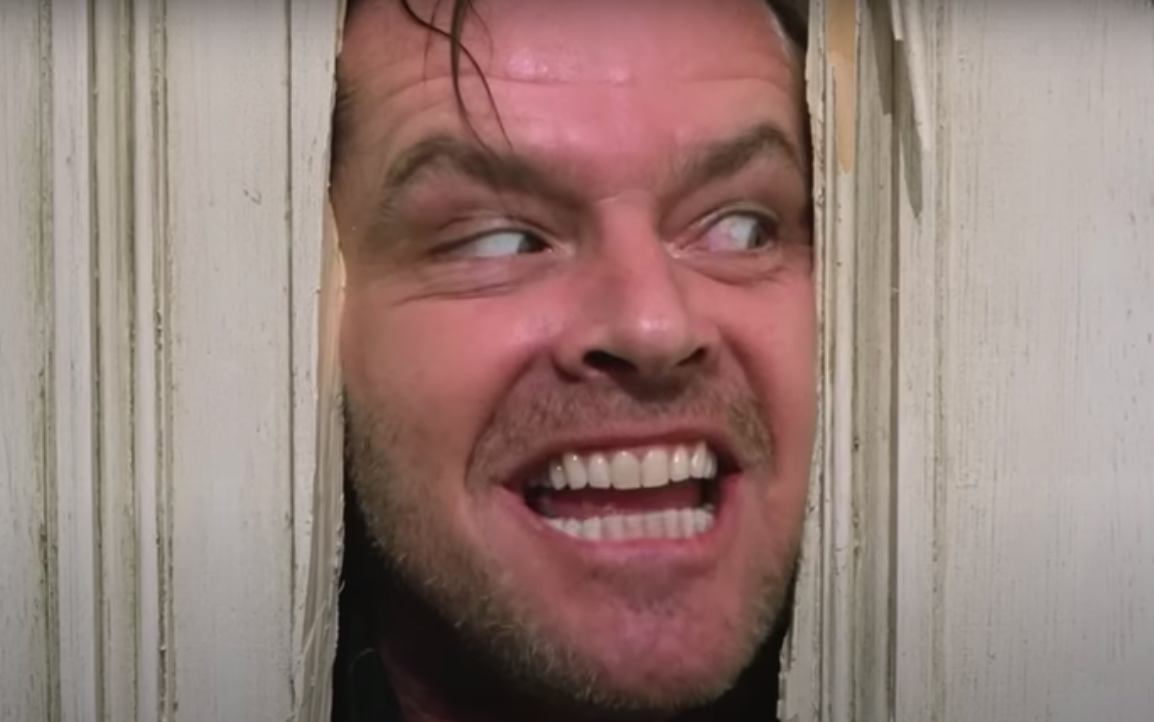interviews
Affinity Konar Confronts a Horror
The Mischling author on masks, trauma & Nazi experiments

In Affinity Konar’s Mischling (Lee Boudreaux Books 2016), we follow Stasha and Pearl, two twelve-year-old girls, as they arrive at Auschwitz. On the train platform, they hide under their grandfather’s coat until a guard discovers that the girls are zwillinge — twins. They are taken from their family and handed over to Josef Mengele, who they call “Uncle Doctor,” and who subjects them to the horrors of human experimentation. In alternating chapters, each girl narrates how they manage to survive. Stasha is in charge of “the funny, the future, the bad.” Whereas Pearl is the curator of “the sad, the good, the past.” The language of the novel is beautiful but also unafraid to fully describe the suffering that the girls are forced to observe and endure.
Mary South: Stasha and Pearl are closely bonded as twins. Their bond is so close it’s almost preternatural at times — for example, when they sit back-to-back and draw on the ground, they always depict the same pictures even though neither twin can see what the other is drawing. They are still quite distinct from each other, however. How did you go about developing the character and voice of each twin?
Affinity Konar: The book came Stasha-first. I wanted to write a kid rebel who dreamed of vengeance, a tomboy with a knife and too many feelings. A girl whose bond with another was so great that the loss of it threatened her own life. Initial inspiration came from the testimony of an eleven-year-old boy named Peter Somogoyi — the Nazis gave all the twins these dull little pocketknives that they could use to cut their bread, and this boy had other plans for his knife, he sharpened it and swore to take one Nazi with him before the end came.
Writing about twins can feel like a cheat, and then, when you see all the built-in risks and assumptions, it becomes a gamble. I was desperate to make Pearl more than the aspirational, polite sister, the whisper to Stasha’s howl. I worried that she would be the paler figure, but a strength asserted itself when I saw that the book needed a voice to bear witness. And so Pearl began to address what Stasha refuses to — she plainly acknowledges the deaths of other children, the likelihood of their family’s fate, the hierarchies within the barracks, the roles of the adults entrusted to oversee their care.
The only choice in their development that felt really calculated — and then, meant to be — was the one to make the twins girls instead of boys. There was something about handing a girl that pocketknife that broke the book open. I remember sitting with the new pages and feeling like I’d just managed to mount a very beautiful horse.
MS: The first half of the novel follows Stasha and Pearl as they arrive in Auschwitz and are chosen for what is called “Mengele’s zoo.” The second half follows each girl as they both struggle to survive in a world that is still unpredictable and brutal after Pearl is forcibly separated from Stasha and then Auschwitz is liberated. What led you to this structural choice and why did you decide to continue their story in lieu of keeping it confined completely to their life inside the camp?
AK: There were two big influences at play here. Children of the Flames, my initial source material, follows the stories of the twins post-liberation and into adulthood, so it was almost as if I couldn’t conceive of a narrative confined strictly to the life within the camps. And then there’s the fact that The Truce was my introduction to Primo Levi’s work, rather than If This Is a Man, so my awareness of Holocaust literature was led by a preoccupation with his fractured journey back to Italy. I leaned on all of Levi’s books, but the story of those travels made a true impression on me. It was probably the first book I read that made me wonder what it meant to rebuild your life in the aftermath of such extreme pain and dehumanization, and it captivated me doubly because it also offers up these odd moments of charm and humor while moving towards a future that remains full of peril.
MS: I read that Mischling took you ten years to write. Could you describe how the novel changed over time?
AK: When I read it, I still see the four other books it thankfully escaped being. Much credit is due to Lee, my editor, for it being in the state I dreamed of. It was a sprawl of a book, a three-parter at one point, always full of confusions. The research was always presenting a new figure or story I found important, and I kept shifting timelines and the ages of the girls. And then there were tonal issues, small things that had to be weeded out because they’d been written just to pull myself through, chapter to chapter. For instance, Feliks tended towards these lines that were tributes to my affection for the Marx brothers — he was my comic relief, along with Bruna — but I often had to recalibrate the lighter gestures, as important as they were. And there used to be a thread that explored the Nazi interest in animal breeding programs, the Third Reich’s obsession with resurrecting the auroch for hunting purposes. I was too taken with the telling absurdity of this — creating something to kill it in sport — and tried having Stasha look at the Zoo with a more pronounced interest in genetics. But that angle, as interesting as it might have been to me, didn’t serve the story of the twins.
The biggest alteration was Mengele himself. When I first thought of the book, I was very young, fixated on injustice in the way that only a sixteen year old can be, and Mengele was one of my main sources of ire. So the spectacle of him threatened to overtake the narrative at various points, and I’m very grateful I never wrote the book in the throes of that particular immaturity, because I doubt I would’ve rewritten it as many times as I did. Eventually, I found that the only way to deal with his monsterism was to portray him not as a man, criminal, or psychopath, but as a series of acts, and to do so only through the perspective of his victims. Any focus on his life distracted from those he so brutally ended and altered. The twins were the only ones who needed to be illuminated. In the end, I struggled with whether to even acknowledge his death within the novel.
MS: There are images and scenes that struck me as seemingly allegorical or something out of a fable. For example, there is Mengele’s wall of eyes and how Stasha calls herself and her friend Feliks “Jackal and Bear,” among other examples. But then, of course, I had to remind myself that these things weren’t allegorical at all. Stasha calls herself and Feliks “Jackal and Bear” because they are wearing jackal and bear fur coats that belonged to victims of the Holocaust. Mengele’s wall of eyes is a literal wall of human eyes he has saved in his attempt to try and artificially change iris pigmentation. Did you employ this allegorical mode that isn’t allegory at all as a way of demonstrating how these girls are trying to mitigate the suffering they’ve endured, or was it for us as readers to even more fully feel the horror of violence that’s so extreme it’s almost unbelievable?
AK: I think of the mode as “masking and unmasking.” Not all the masks are even pleasant — just fair and ready covers for the terror beneath — my hope is that when the masks slip, the terror is enlarged.
I am greedy though, because while emphasizing horror was foremost, I also hoped that the masking could speak to the coping mechanisms of the girls. Stasha’s fur was stolen from someone who is most likely dead. And with the guilt of survival at her back, she’s warmed, protected, and inspired to form a new, violent identity, because it doesn’t feel safe to live as a Jewish girl anymore. The very fact that she retreats into this persona immediately after liberation is meaningful, or so I hope.
And I have to note that I’m always grateful for this particular read, because I shudder a bit whenever I hear the word “magical” tossed about with respect to how the girls view the world. This is not magic. It’s an endangered life with a series of veils. Some of the veils might appear charming because they’ve been draped by the hand of a child. But they remain veils. And their arrangement within the book is a strange, fraught task, because there is an inevitable confrontation with the surreal that occurs while examining the camps. This was an anti-world within the world, it offers up the unimaginable. I tried to test the masks and the veils for their sensitivity, and their value to the characters, to not approach the array of sights as hinges for artistic opportunity.
MS: Theodore Adorno said that there can be no poetry after Auschwitz. What were the concerns and difficulties you had in writing about such an infamous historical setting? Did you worry about depicting trauma you didn’t experience firsthand?
AK: It’s a statement I encountered early and was paralyzed by, repeatedly. And I liked that paralysis, to be honest. It shut down the possibilities, and made me imagine writing something else. But I couldn’t write anything else, not in the way I wanted to. My stops-and-starts were flat, my characters were shams. I collected research, put down the book, took it up again, immersed myself in warnings about fictionalizing the Holocaust. I had this imagined conversation between the twins in my head and I kept trying not to think of it. When I couldn’t help but think of it, when I had no way but write, I’d always go back to Paul Celan and Edmond Jabes with their silences and estrangements and questions. Their effort to articulate the unspeakable, to pummel and peer into a world — it drew me in and it kept me there, and I knew I’d never know or understand such pain, but I felt that those poems were teaching me something beyond language and horror, something about what it meant to bear empathy. In those moments, the book would feel worth writing, as a private, hushed endeavor. I knew I probably wouldn’t be successful but I hoped to utilize language to create characters whose voices sought to restore their humanity. I hoped that this struggle, this desperate reach for articulation, would be evident in the text, and that the prettiness that would inevitably arise in the perspectives of children would travel not in the vein of “life is beautiful beyond all suffering” but towards the question of “may my life have meaning again?”
Many of the people who influenced this book suffered in ways my own ancestors escaped. So yes, I was concerned about depicting trauma that no research can contain, about portraying suffering that can never be relentless enough, or brutality whose blows and calculations will only be blunted by words. I wanted the twins to move only in tribute to survivors, and to serve, in their commitment to family and future, as an act of remembrance. Over the years, I questioned myself more than I actually wrote, and I’ve only recently come to accept that these questions may always be with me, and maybe they need to be. Maybe living with a perpetual sense of self-interrogation is the only way that I can honor the people and stories that have given this book its reason for being.
MS: The title of the novel, Mischling, comes from the Nazi term for those of “mixed blood.” Pearl and Stasha are mistakenly believed to be mischlinge because of their blonde hair. But you’ve said that the “mischling” of the title also comes from how trauma changes one irrevocably. I was hoping you could comment more on how you decided to have the girls cope with trauma or how the trauma manifested for them — from Stasha’s medical research that she undertakes almost in defiant imitation of Mengele and her belief that he has made her immortal to Pearl’s amnesia.
AK: Trauma imposes a lot of doubles, I think. There’s the loss of who you could have been, and then there is this other, altered person. That person might be a better person, but there will always be that mystery, and maybe the only way to live with yourself becomes finding a way to love that mystery. I wanted to write girls who fortified themselves with a curiosity about who they could be beyond their suffering. For Stasha, survival is disguise, the transfiguration of horror into something that remains terrible, but bears a lesser poison. She places herself beyond the limits of mortality because without this in question, she can begin to endure. And there are times when she sees herself not as a prisoner, but a trickster, one destined to end Mengele. Pearl, the one who has always committed herself to bearing witness with such clarity — trauma for her can express itself only in a series of blanks, of black-outs and emptiness, and since she doesn’t have Stasha’s contortionist thinking, her coping tactics are different, and ultimately, more optimistic. While Stasha would insist that a dark sky isn’t dark, or even a sky at all, Pearl would say that the sky is just dark, for no good reason, but maybe, someday, it will relent.
MS: You’ve said that initial inspiration for the novel came from reading Children of the Flames. What other sources, both fictional and nonfictional, were influential in writing Mischling?
AK: I hoped that the book might carry the texture of a Yiddish folktale, a vivid sense of the childlike amid struggle, marked with moments of humor, so I revisited a lot of legends and proverbs — at one point, the book actually addressed this literature directly, through Bruna’s voice. I reread Isaac Bashevis Singer, Bruno Schulz, Isaac Babel, and Kafka regularly while in the thick of writing, and sheltered myself rather ridiculously from voices that strayed from a sort of Slavic space, because I am easily distracted.
The memoirs of Gisella Perl, a doctor in Auschwitz, and Eva Mozes Kor, who was imprisoned with her twin sister Miriam Mozes Zeiger, were invaluable. Eva Kor is an extraordinary person who inspired Pearl’s message of forgiveness — being humbled by her life, day in and out, was the only way I could write.
Sara Nomberg-Prytzyk’s memoir was also really instrumental. Her observations and details are unlike any else I’ve seen, and she captures a strange lightness within her depiction of Auschwitz.
Charlotte Saloman’s art was a site of constant return. I often looked at Jewish papercuts before writing Pearl’s voice — I wanted that delicacy, even if it was obvious only to me, in that moment of writerly processing. And for Stasha, I wanted pure stance, so I’d look at the bold, blocky lines of woodcuts.
I returned to a lot of Eastern European poets, in search of a certain playful but grim feeling: Szymborska, Simic, Popa, Herbert, Milosz, Zagajewski. People have mentioned Plath to me after reading the novel; I didn’t consciously refer to her poems, but I’m sure the influence bled through.
MS: Are you working on anything new? What comes after Mischling?
AK: After this — chaos! I tell myself that I’m in “collaging mode,” just collecting conversations, descriptions, figures. A friend said to me once that the best books are ones that feel epistolary in nature; that gives me hope about my current book, because I think my real talent is not with words, but in missing people I’ve never known, and in bearing a drive to address them. So I am concerned that what I do next still carries the urgency of a letter. I’ll admit that I see this book as The Book, so it is hard sometimes to imagine finishing another, especially since, for better or worse, I feel a bit pinned to narratives that are childlike quests for justice. But I did manage to collect other stories while deep in this one, and I’m moving back and forth between two ideas that have been with years, ones that I likely would have written off previously as being too dark and intense. While writing Mischling introduced a lot of authorial fear into my life — fear that still remains — it has definitely vanquished that particular anxiety. And I know that what I do will likely still want to peer into an aftermath, to know what it might mean to rebuild oneself.









